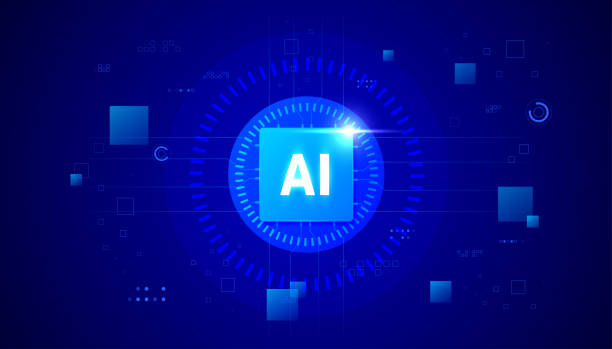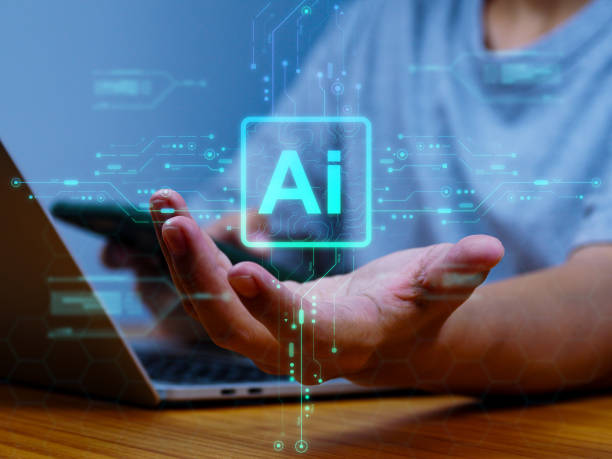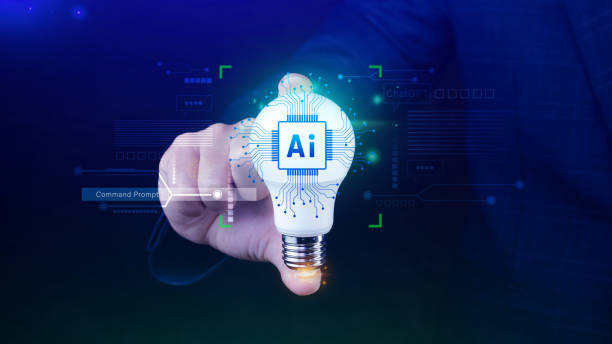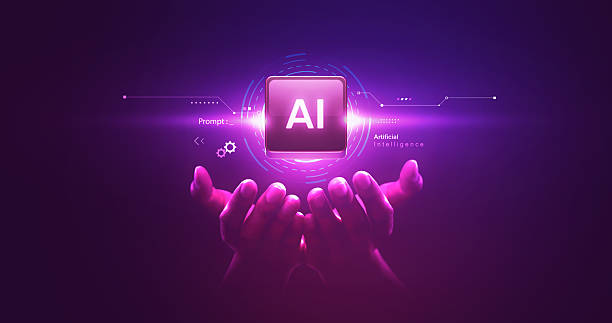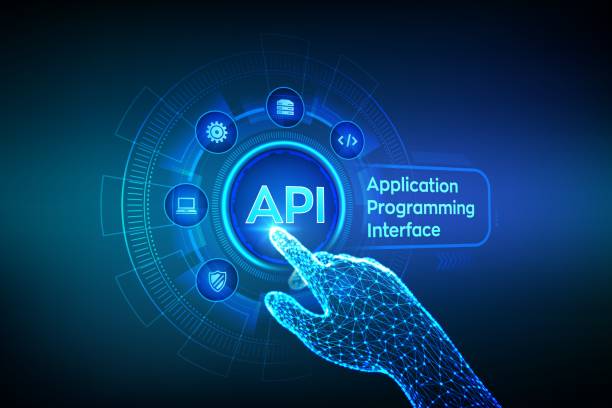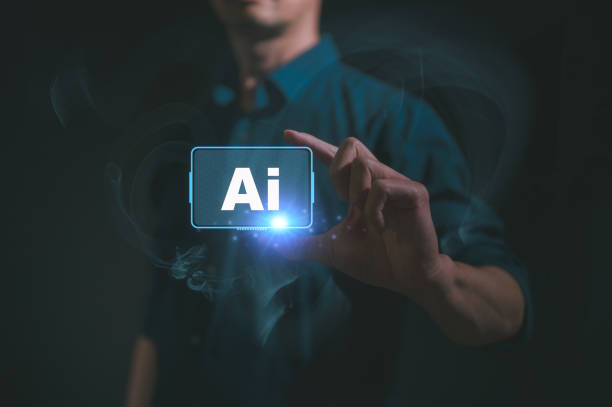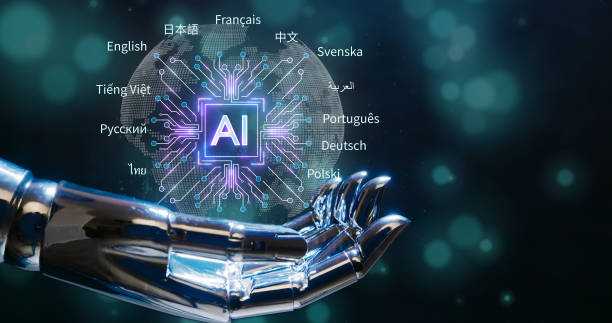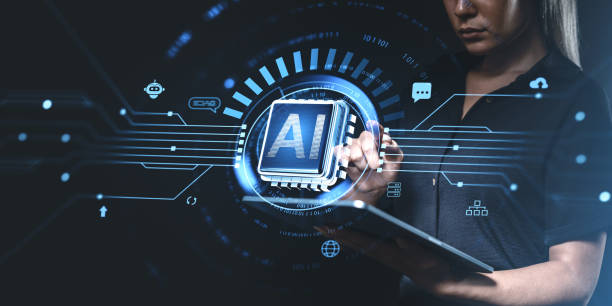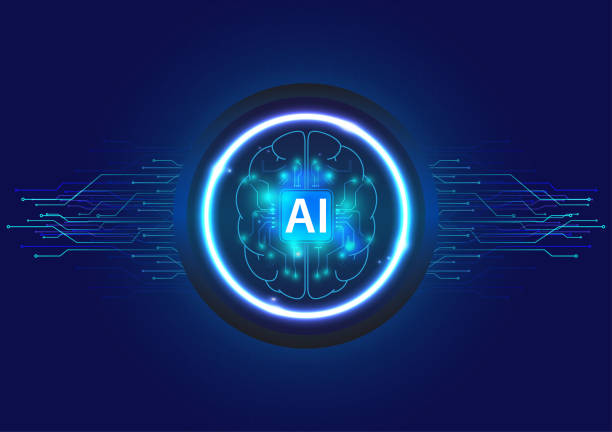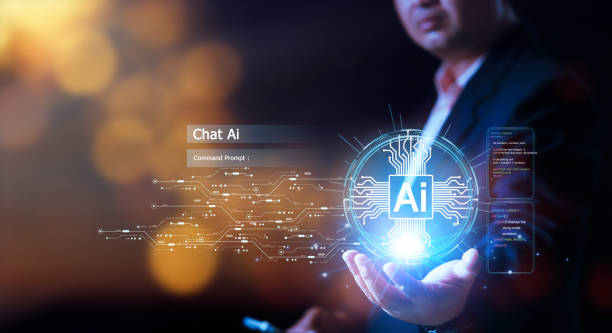What is an Artificial Intelligence Robot? A Comprehensive and Practical Definition
Artificial intelligence robots are a combination of two important fields: #artificial_intelligence and #robotics.
Simply put, an AI robot is a physical or software machine that uses algorithms and artificial intelligence techniques to perform tasks that typically require human intelligence.
These tasks can include learning, problem-solving, decision-making, pattern recognition, and interaction with the environment.
In fact, an AI robot tries to imitate human cognitive abilities to perform better in various tasks.
To better understand this concept, one can refer to industrial robots that are able to perform complex and repetitive tasks with high accuracy and speed using artificial intelligence.
These robots can be used in production lines, warehouses, and even in hazardous environments.
Artificial intelligence allows robots to make appropriate decisions automatically and without direct human intervention, and to adapt to different conditions.
An AI robot is in fact an intelligent system that can operate independently and play an important role in many industries and fields.
Does your current company website present a worthy image of your brand and attract new customers?
If not, turn this challenge into an opportunity with Rasaweb’s professional corporate website design services.
✅ Dramatically improves your brand image and credibility.
✅ Paves the way for you to attract leads and new customers.
⚡ Contact Rasaweb now for free and expert advice!
The Main Components of an Artificial Intelligence Robot: Architecture and Functionality
An AI robot consists of several main components, each of which plays an important role in its overall performance.
These components include: 1.
Sensors: Sensors collect information about the environment.
This information can include temperature, light, sound, images, and other data.
Sensors help the robot to be aware of the environmental situation and make decisions based on it.
2.
Processor: The processor is responsible for processing the data collected by the sensors.
This processing includes data analysis, pattern recognition, and extraction of useful information.
The processor uses artificial intelligence algorithms to make appropriate decisions for the robot.
3.
Actuators: Actuators are responsible for carrying out the processor’s commands.
These actuators can include motors, arms, wheels, and other mechanical components.
Actuators allow the robot to move in the environment, manipulate objects, and perform various tasks.
4.
Artificial intelligence algorithms: Artificial intelligence algorithms are the brain of the robot.
These algorithms include neural networks, support vector machines, decision trees, and other machine learning techniques.
Artificial intelligence algorithms allow the robot to learn from its experiences and improve its performance.
By combining these components, the AI robot is able to perform complex and diverse tasks that in the past could only be performed by humans.
Artificial intelligence is constantly evolving, and with the advancement of technology, AI robots are also becoming more advanced and efficient.
Click here to preview your posts with PRO themes ››
Amazing Applications of Artificial Intelligence Robots in Various Industries
Artificial intelligence robots have extensive applications in various industries and play an important role in improving efficiency and reducing costs.
In the manufacturing industry, AI robots can perform repetitive and dangerous tasks with high accuracy and speed.
These robots can be used in production lines, assembly of parts, and packaging of products.
In the health and medical industry, AI robots can play an important role in surgery, disease diagnosis, and patient care.
These robots can perform complex surgeries with high precision and assist doctors in diagnosing diseases.
In the transportation industry, AI robots can be used in autonomous driving, traffic management, and delivery of goods.
These robots can increase the safety and efficiency of the transportation system by reducing accidents and improving traffic flow.
In the service industry, AI robots can be used to respond to customers, provide support services, and perform administrative tasks.
These robots can increase customer satisfaction by providing fast and efficient services.
In addition, AI robots have diverse applications in other fields such as education, agriculture, and security.
In each of these fields, AI robots can create significant improvements in performance and efficiency by providing innovative solutions.
| Industry | Application |
|---|---|
| Manufacturing | Performing repetitive and dangerous tasks |
| Health and medical | Surgery, disease diagnosis |
| Transportation | Autonomous driving, traffic management |
| Services | Responding to customers, support |
Advantages and Disadvantages of Using Artificial Intelligence Robots: A Comprehensive Review
Using AI robots has its own advantages and disadvantages that must be considered.
The advantages of using AI robots include increased efficiency, reduced costs, increased accuracy, and safety.
AI robots can perform tasks faster and more accurately than humans, thereby increasing the overall efficiency of the system.
Also, AI robots can be used in dangerous and inaccessible environments for humans, increasing safety.
On the other hand, using AI robots also has disadvantages.
These disadvantages include high implementation costs, the need for technical expertise, potential job losses, and ethical concerns.
Implementing AI robots requires significant investment and technical expertise for their design, programming, and maintenance.
Also, the use of AI robots may lead to job losses in some industries, and there are ethical concerns about their use.
For example, the use of AI robots in important decision-making may lead to discrimination and inequality.
Therefore, appropriate decisions should be made regarding the use of AI robots with careful attention to these advantages and disadvantages.
Does your current company website present a worthy image of your brand and attract new customers?
If not, turn this challenge into an opportunity with Rasaweb’s professional corporate website design services.
✅ Dramatically improves your brand image and credibility.
✅ Paves the way for you to attract leads and new customers.
⚡ Contact Rasaweb now for free and expert advice!
Challenges Facing the Development of Artificial Intelligence Robots: Obstacles and Solutions
The development of AI robots faces several challenges, and in order to progress in this field, these challenges must be identified and appropriate solutions provided.
One of the main challenges is the lack of training data.
Artificial intelligence algorithms need a lot of data to learn and improve their performance, and the lack of this data can hinder the development of AI robots.
Another challenge is the complexity of artificial intelligence algorithms.
Designing and implementing complex artificial intelligence algorithms requires high technical expertise, and this can hinder the development of AI robots.
Also, issues related to security and privacy are among the challenges facing the development of AI robots.
AI robots may be exposed to cyber attacks and disclose sensitive information.
In addition, there are concerns about the use of AI robots to monitor and control people.
To solve these challenges, efforts should be made to collect more training data, design simpler artificial intelligence algorithms, and seriously address security and privacy issues.
By overcoming these challenges, it is possible to contribute to the development of more advanced and efficient AI robots.
The Future of Artificial Intelligence Robots: What Expectations Can Be Had
The future of AI robots is very bright and full of new opportunities.
With the advancement of technology and the development of artificial intelligence algorithms, it can be expected that AI robots will play a more important role in our lives in the future.
One of the main expectations is the expansion of the applications of AI robots in various industries.
AI robots can create significant improvements in performance and efficiency in fields such as manufacturing, health and medical, transportation, services, and education.
Also, it can be expected that AI robots will be able to perform more complex tasks in the future and interact more effectively with humans.
For example, AI robots can help in caring for the elderly, educating children, and providing counseling services to people in need.
In addition, it can be expected that AI robots will have more emotional intelligence in the future and be able to understand and respond to human emotions.
This can lead to the creation of more empathetic and trustworthy AI robots.
Overall, the future of AI robots is full of possibilities and new opportunities, and with effort and innovation, these opportunities can be used to improve human lives.
How to Choose the Right Artificial Intelligence Robot for Your Business
Choosing the right AI robot for your business is an important decision that should be made carefully and with attention to your specific needs and goals.
To choose the right AI robot, you must first accurately identify your needs.
What tasks do you want to entrust to the AI robot? What results do you expect from using the AI robot? After identifying the needs, you should examine the features of different AI robots.
Different AI robots have different features and capabilities, and you should choose a robot that is compatible with your needs.
For example, if you need a robot that is capable of performing repetitive and accurate tasks, you should choose a robot that has high accuracy and speed.
Also, you should pay attention to the implementation and maintenance costs of the AI robot.
The implementation and maintenance costs of AI robots can vary, and you should choose a robot that is compatible with your budget.
In addition, you should also pay attention to security and privacy issues.
The AI robot must have strong security mechanisms to protect your information.
By considering these factors, you can choose the right AI robot for your business and benefit from its advantages.
| Factor | Description |
|---|---|
| Needs | Accurately identify the tasks that the robot should perform |
| Features | Examine the features of different robots and choose a compatible robot |
| Cost | Pay attention to implementation and maintenance costs |
| Security | Examine the security mechanisms of the robot |
The Impact of Artificial Intelligence Robots on the Labor Market: Opportunities and Threats
AI robots have a significant impact on the labor market and create both opportunities and threats.
On the one hand, AI robots can lead to increased efficiency and productivity in various industries and create new job opportunities in areas such as robot design, programming, maintenance, and repair.
Also, AI robots can perform repetitive and dangerous tasks, allowing humans to focus on more creative and strategic tasks.
On the other hand, AI robots can lead to job losses in some industries.
AI robots are capable of performing tasks that were previously performed by humans, and this can lead to a decrease in demand for human labor.
To counter this threat, efforts should be made to acquire the skills necessary to work with AI robots and specialize in areas where robots cannot replace humans.
Also, attention should be paid to creating support policies for people who lose their jobs.
By considering these opportunities and threats, AI robots can be used in a way that benefits everyone.
Are you worried about losing customers who don’t have a professional online store website?
Forget these worries with online store website design by Rasaweb!
✅ Significant increase in sales and visitor-to-customer conversion rate
✅ Professional and user-friendly design that earns customer trust
⚡ Get free advice from Rasaweb
Case Study: Successes and Failures of Artificial Intelligence Robots in the Real World
AI robots have faced many successes and failures in the real world, and reviewing them can provide valuable lessons for the development and use of this technology.
One of the great successes is the use of AI robots in the manufacturing industry.
AI robots operate with high accuracy and speed in production lines, parts assembly, and product packaging, helping to improve efficiency and reduce costs.
Also, the use of AI robots in complex surgeries is another success of this technology.
Surgical robots can perform surgeries with high precision and help reduce risk and improve results.
On the other hand, AI robots have also faced failures.
One of these failures is the effort to create self-driving robots.
Despite significant progress in this area, there are still many problems with the safety and reliability of self-driving robots.
Also, the use of AI robots in some areas has faced objections and ethical concerns.
For example, the use of AI robots in judicial decision-making may lead to discrimination and inequality.
By reviewing these successes and failures, lessons can be learned from past experiences and mistakes can be avoided.
Robotics is constantly evolving, and with the advancement of technology, AI robots are also becoming more advanced and efficient.
Ethical Issues Surrounding Artificial Intelligence Robots: What Points Should Be Considered
AI robots raise important ethical issues that should be addressed in the development and use of this technology.
One of the main issues is accountability.
If an AI robot makes a mistake, who will be responsible? Is it the robot manufacturer, the robot user, or the robot itself that is responsible? These questions do not have simple answers and require careful review and the development of appropriate laws and regulations.
Another challenge is privacy.
AI robots can collect a lot of information about people, and this information may be used in ways that violate people’s privacy.
For example, AI robots can use the information collected for targeted advertising, monitoring of people, or discrimination against them.
Also, there are concerns about the use of AI robots in war and the production of automatic weapons.
The use of AI robots in war can lead to increased violence and reduced human control over military decision-making.
To solve these ethical issues, efforts should be made to develop appropriate laws and regulations for the development and use of AI robots and to prevent the use of this technology in ways that violate people’s rights and freedoms.
It should be borne in mind that the goal of developing robots is to serve humanity, not to threaten it.
Frequently Asked Questions
| Question | Answer |
|---|---|
| What is an artificial intelligence robot? | It is a robot that uses artificial intelligence capabilities to understand the environment, reason, learn, and make decisions in order to perform complex tasks independently. |
| What is the main difference between a regular robot and an artificial intelligence robot? | Artificial intelligence robots can learn and adapt to their environment, while regular robots usually operate based on fixed and pre-determined programming. |
| In what areas are artificial intelligence robots used? | In areas such as industry (production lines), medicine (robotic surgeries), services (customer support, intelligent vacuum cleaners), exploration (space and underwater), and entertainment. |
| How do artificial intelligence robots learn? | They acquire new skills through machine learning (Machine Learning) and deep learning (Deep Learning) algorithms, by analyzing large amounts of data and identifying patterns. |
| Can artificial intelligence robots have emotions? | Currently, no. They can identify or simulate emotions, but they do not have a real experience of emotions like humans. |
| What are the most important advantages of using artificial intelligence robots? | Increased productivity, reduced human error, performing dangerous or repetitive tasks, and providing innovative and efficient services. |
| What challenges exist in the development of artificial intelligence robots? | The need for large amounts of high-quality data, the complexity of algorithms, ethical issues, cyber security, and the high cost of research and development. |
| Are artificial intelligence robots dangerous to humans? | By adhering to safe design principles and ethical regulations, no. Concerns are more related to social and economic impacts such as changes in the labor market. |
| What is an example of an artificial intelligence robot in everyday life? | Intelligent vacuum cleaner robots (such as Roomba) that automatically map and clean the house, or intelligent voice assistants (such as Siri and Alexa). |
| How is the future of artificial intelligence robots predicted? | They are expected to become smarter, more autonomous, and capable of more complex interaction with humans, and to play a more prominent role in industry, medicine, transportation, and everyday life. |
And other services of Rasa Web advertising agency in the field of advertising
Intelligent brand identity: a new service to increase campaign management by customizing the user experience.
Intelligent reporting: a dedicated service to grow user engagement based on the use of real data.
Intelligent customer journey map: designed for businesses looking to grow online by customizing the user experience.
Intelligent website development: a combination of creativity and technology to increase click-through rate by managing Google Ads.
Intelligent data analysis: a fast and efficient solution to increase click-through rate with a focus on custom programming.
And more than hundreds of other services in the field of internet advertising, advertising consulting and organizational solutions
Internet Advertising | Advertising Strategy | Advertising Report
Resources
What is ChatGPT? What are its applications?
,What is an intelligent artificial intelligence robot? 🤖 Explanation of concept, application and
,Get to know the importance and applications of artificial intelligence?
,A look at the future of artificial intelligence; What benefits does it have? Let’s inspect the benefits
? For a strong presence in the digital world and to promote your business, Rasaweb Afarin, a leading digital marketing agency, is with you. With our comprehensive services including SEO optimized website design, we take your business to the peak.
📍 Tehran, Mirdamad Street, next to the Central Bank, Kazerun Jonoubi Alley, Ramin Alley No. 6
“`
### ما هو روبوت الذكاء الاصطناعي؟ تعريف شامل وعملي
روبوت الذكاء الاصطناعي هو مزيج من مجالين مهمين: #الذكاء_الاصطناعي و #الروبوتات.
ببساطة، روبوت الذكاء الاصطناعي هو آلة مادية أو برمجية تستخدم الخوارزميات وتقنيات الذكاء الاصطناعي لأداء المهام التي تتطلب عادةً ذكاءً بشريًا.
يمكن أن تشمل هذه المهام التعلم وحل المشكلات واتخاذ القرارات والتعرف على الأنماط والتفاعل مع البيئة.
في الواقع، يحاول روبوت الذكاء الاصطناعي تقليد القدرات المعرفية البشرية لأداء أفضل في مختلف المهام.
لفهم هذا المفهوم بشكل أفضل، يمكن الإشارة إلى الروبوتات الصناعية القادرة على أداء مهام معقدة ومتكررة بدقة وسرعة عالية باستخدام الذكاء الاصطناعي.
يمكن استخدام هذه الروبوتات في خطوط الإنتاج والمستودعات وحتى في البيئات الخطرة.
الذكاء الاصطناعي يسمح للروبوتات باتخاذ القرارات المناسبة تلقائيًا ودون تدخل بشري مباشر، والتكيف مع الظروف المختلفة.
روبوت الذكاء الاصطناعي هو في الواقع نظام ذكي يمكنه العمل بشكل مستقل ولعب دور مهم في العديد من الصناعات والمجالات.
هل يقدم موقع شركتك الحالي صورة جديرة بعلامتك التجارية ويجذب عملاء جدد؟
إذا لم يكن الأمر كذلك، فحوّل هذا التحدي إلى فرصة مع خدمات تصميم مواقع الشركات الاحترافية من رسويب.
✅ يحسن بشكل كبير صورة علامتك التجارية ومصداقيتها.
✅ يمهد الطريق لك لجذب العملاء المحتملين والعملاء الجدد.
⚡ اتصل برسويب الآن للحصول على مشورة مجانية ومتخصصة!
المكونات الرئيسية لروبوت الذكاء الاصطناعي: الهندسة المعمارية والوظائف
يتكون روبوت الذكاء الاصطناعي من عدة مكونات رئيسية، يلعب كل منها دورًا مهمًا في أدائه العام.
تشمل هذه المكونات: 1.
أجهزة الاستشعار: تجمع أجهزة الاستشعار معلومات حول البيئة.
يمكن أن تتضمن هذه المعلومات درجة الحرارة والضوء والصوت والصور والبيانات الأخرى.
تساعد أجهزة الاستشعار الروبوت على إدراك الوضع البيئي واتخاذ القرارات بناءً عليه.
2.
المعالج: المعالج مسؤول عن معالجة البيانات التي تجمعها أجهزة الاستشعار.
تتضمن هذه المعالجة تحليل البيانات والتعرف على الأنماط واستخراج المعلومات المفيدة.
يستخدم المعالج خوارزميات الذكاء الاصطناعي لاتخاذ القرارات المناسبة للروبوت.
3.
المشغلات: المشغلات مسؤولة عن تنفيذ أوامر المعالج.
يمكن أن تشمل هذه المشغلات المحركات والأذرع والعجلات والمكونات الميكانيكية الأخرى.
تسمح المشغلات للروبوت بالتحرك في البيئة ومعالجة الأشياء وأداء مهام مختلفة.
4.
خوارزميات الذكاء الاصطناعي: خوارزميات الذكاء الاصطناعي هي دماغ الروبوت.
تتضمن هذه الخوارزميات الشبكات العصبية وآلات ناقلات الدعم وأشجار القرار وتقنيات التعلم الآلي الأخرى.
تسمح خوارزميات الذكاء الاصطناعي للروبوت بالتعلم من تجاربه وتحسين أدائه.
من خلال الجمع بين هذه المكونات، يكون روبوت الذكاء الاصطناعي قادرًا على أداء مهام معقدة ومتنوعة لم يكن من الممكن القيام بها في الماضي إلا من قبل البشر.
الذكاء الاصطناعي يتطور باستمرار، ومع تقدم التكنولوجيا، تصبح روبوتات الذكاء الاصطناعي أيضًا أكثر تقدمًا وكفاءة.
تطبيقات مذهلة لروبوتات الذكاء الاصطناعي في مختلف الصناعات

